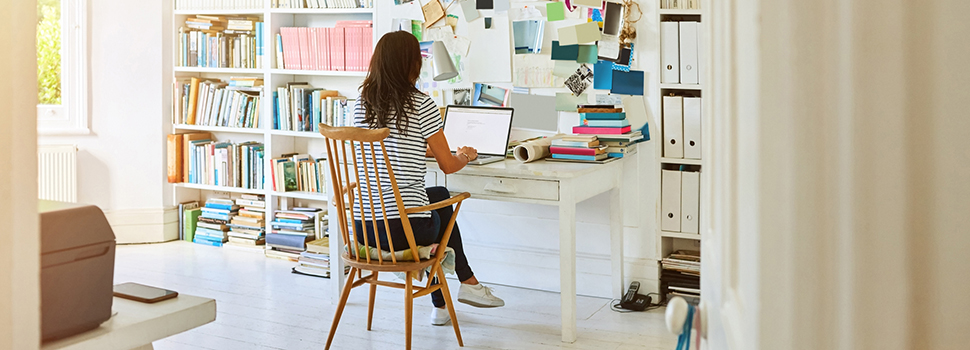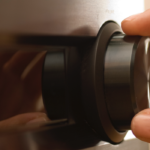Karen Quach | May 14, 2018
How to Set Up a Home Office
Working remotely from a home office can be incredibly rewarding, and more companies than ever are offering work-from-home opportunities. Remote work often allows for flexible scheduling, a more casual wardrobe, and less time wasted commuting to and from the office.
Setting up a workspace requires some planning to ensure you’re comfortable and productive in a nontraditional work environment. The following tips can help you set up a home office on the right foot.
Create a Dedicated Space
It’s hard to be productive if you’re shuffling back and forth from the kitchen table to the living room couch all day. You’ll need a dedicated space. Designate a spot in your home or apartment, such as a spare bedroom or corner of your family room, and use that as your dedicated work space.
Sure, it can be really nice to sit on the back porch on a sunny afternoon and hammer out a few hours of work—but you should do so by choice, not because there’s nowhere else to work.
Optimize Your Work Environment
Having a pleasant and ergonomically appropriate setup for your home office is crucial, so it’s worth investing your time and money in a workspace you’ll actually want to work in.
Find a desk you like, and make sure you select a comfortable and supportive chair. Purchase a second monitor, wireless mouse, or any additional electronics or office equipment you need to be productive. Aesthetics matter too. When planning to set up a home office, try to choose location near a window for natural light, then add a lamp or task lighting to further enhance the space. Consider adding some houseplants to give your office a more comfortable feel.
Set Appropriate Boundaries
Working from a home office can introduce unexpected distractions, especially if you have other family members or pets in the house with you during the day. Strive to develop a daily routine that helps minimize interruptions.
For example, keep the television turned off during work hours. If your office has a door, don’t be afraid to shut it. Set clear expectations for the other members of your household that you’re earning a living and require some level of cooperation in order to focus on your work and do it effectively.
Prioritize Organization and Storage
You’ll need a place to organize and store office supplies, files, and important documents to eliminate home office clutter. You’re probably not going to have a dedicated supply closet or printer room, but a desk with lots of drawers or a small filing cabinet will do. You could also use bookcases or more extensive storage solutions depending on your specific needs.
If you don’t have a place to put everything, it could end up in a pile on your desk, and the excess mess could affect your productivity.
Don’t Give Up Your Work-Life Balance
Skipping that daily commute is wonderful, and never sitting in rush-hour traffic or jostling into a crowded subway car is a great way to reduce stress. There’s a downside to having a home office, though. Without a way to physically leave work, your professional life can bleed into your personal time and cause a shift in your work-life balance.
When it’s time to “go home” after work, shut down your computer and walk away from your workspace. Mentally, try to draw a clear line between working and not working. If it’s helpful, set an alarm or reminder at the end of your workday, and be firm about calling it quits after hours.
As you set up a home office, use the above tips to make the space your own so you can work as productively as possible.






